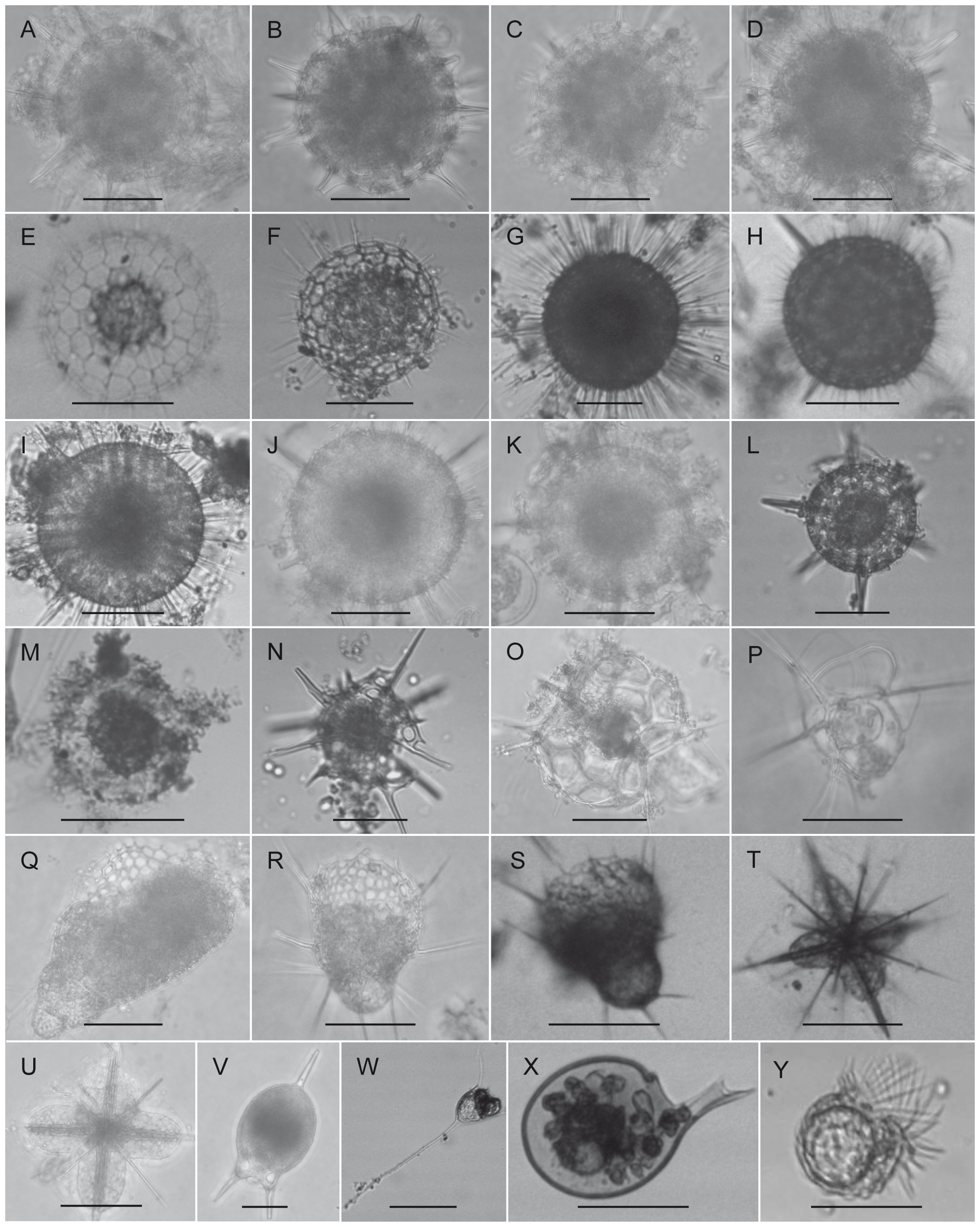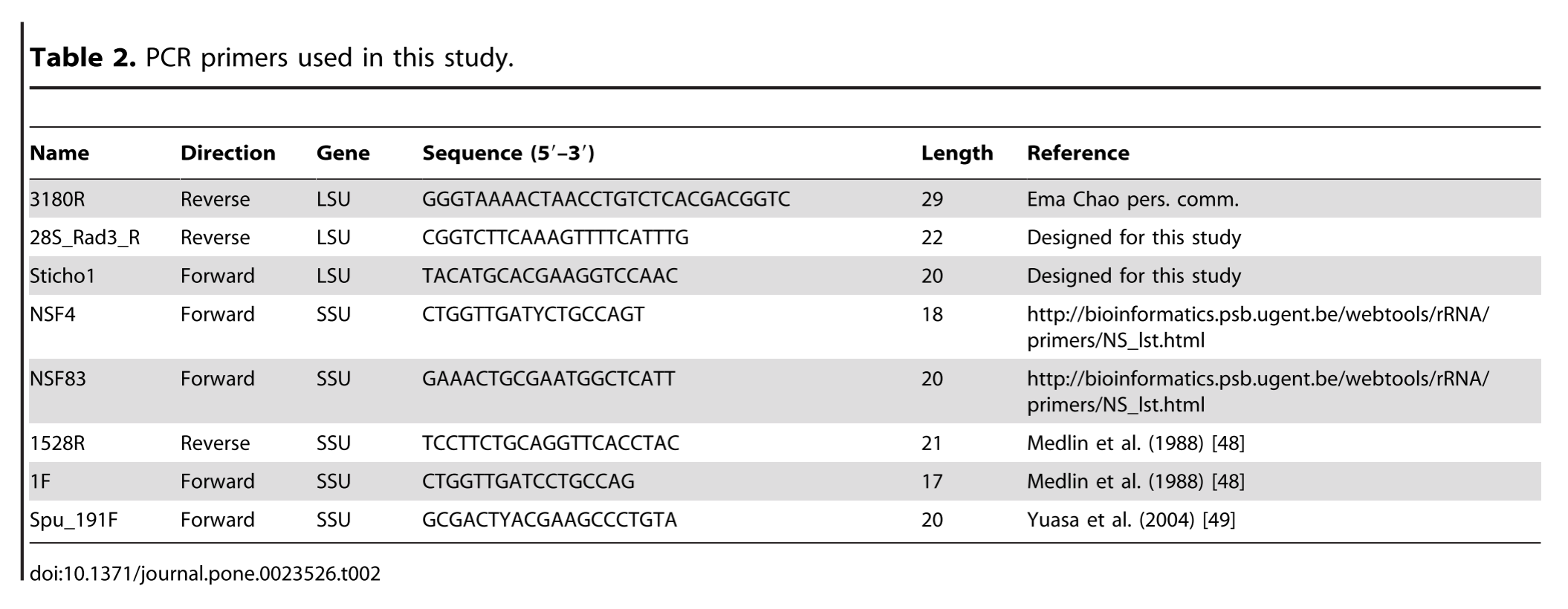Radiolaria Divided into Polycystina and Spasmaria in Combined 18S and 28S rDNA Phylogeny
Krabberød, A. K., Bråte, J., Dolven, J. K., Ose, R. F., Klaveness, D., Kristensen, T., Bjørklund, K. and Shalchian-Tabrizi, K. 2011. PLoS ONE. 6(8): e23526. doi:10.1371/journal.pone.0023526



Abstract
Radiolarians are marine planktonic protists that belong to the eukaryote supergroup Rhizaria together with Foraminifera and Cercozoa. Radiolaria has traditionally been divided into four main groups based on morphological characters; i.e. Polycystina, Acantharia, Nassellaria and Phaeodaria. But recent 18S rDNA phylogenies have shown that Phaeodaria belongs within Cerocozoa, and that the previously heliozoan group Taxopodida should be included in Radiolaria. 18S rDNA phylogenies have not yet resolved the sister relationship between the main Radiolaria groups, but nevertheless suggests that Spumellaria, and thereby also Polycystina, are polyphyletic. Very few sequences other than 18S rDNA have so far been generated from radiolarian cells, mostly due to the fact that Radiolaria has been impossible to cultivate and single cell PCR has been hampered by low success rate. Here we have therefore investigated the mutual evolutionary relationship of the main radiolarian groups by using the novel approach of combining single cell whole genome amplification with targeted PCR amplification of the 18S and 28S rDNA genes. Combined 18S and 28S phylogeny of sequences obtained from single cells shows that Radiolaria is divided into two main lineages: Polycystina (Spumellaria+Nassellaria) and Spasmaria (Acantharia+Taxopodida). Further we show with high support that Foraminifera groups within Radiolaria supporting the Retaria hypothesis.